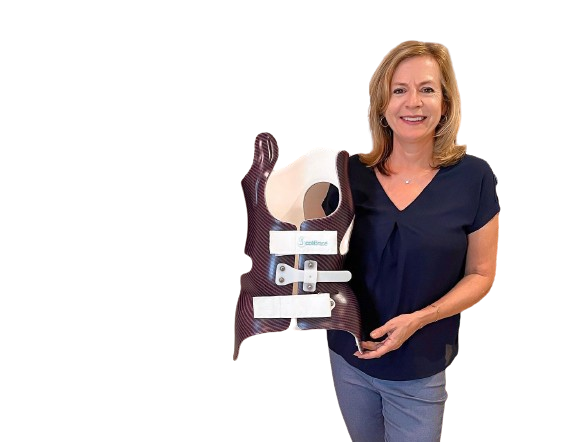Back pain is an all-too-common complaint among desk workers, and yes, your job could be a big factor. Sitting for hours, poor posture, and ineffective workspace setups often lead to spinal strain, stiffness, and long-term discomfort. The good news? Small daily habits, paired with improved ergonomics, can make a world of difference. Whether it’s standing up more, stretching, or tweaking your desk arrangement, you can take control of your spine health starting today.
The Impact of Desk Jobs on Spine Health
Sitting at a desk might seem harmless, but over time, it can take a serious toll on your spine. Hours spent hunched over a keyboard can lead to discomfort, reduced mobility, and even long-term spinal complications. Let’s explore why office work plays such a large role in back pain and what’s happening to your body.
The Prevalence of Back Pain Among Office Workers
Back pain is one of the most common complaints among office workers, and the numbers back this up. Studies estimate that 25% to nearly 40% of office workers report experiencing persistent lower back pain. This issue doesn’t discriminate by role—whether you’re a manager or entry-level staff, the risks of long-term sitting are just as high. However, research shows that workers in sedentary roles with minimal physical activity are among the worst affected.
What’s going on here? Prolonged sitting contributes to spinal strain, poor posture, and muscle stiffness, but that’s just part of the story. Psychosocial factors also matter, including workplace stress and lack of ergonomic support, often amplifying discomfort. Not taking action could lead to chronic pain becoming a lifelong issue.
Physical and Structural Consequences of Prolonged Sitting
Sitting for extended periods does more than just make your back ache. It puts immense pressure on your spinal discs, the cushions between your vertebrae that act as shock absorbers. Over time, this pressure can cause disc wear and tear, potentially leading to herniation, nerve compression (think sciatica), and more serious conditions.
Here are just a few physical changes that prolonged sitting can cause:
- Compressed spinal discs: Slouching places relentless stress on your lower back, compressing discs over time.
- Weakened core muscles: Staying seated for hours diminishes the stabilizing power of your core.
- Reduced flexibility: Without movement, the hips, shoulders, and spine become stiff, making even minor tasks like tying your shoes painful.
- Increased muscle fatigue: Sitting engages some muscles while others “switch off,” creating an imbalance that worsens over time.
Simply put, your spine isn’t made for long periods of inactivity, and sitting restricts the movement it needs to stay healthy.

Photo by Kaboompics.com
The Link Between Sedentary Behavior and Spine Issues
Did you know that sitting too much weakens the very muscles your spine relies on for support? Sedentary habits—transforming our daily lives into long hours of sitting—lead to widespread issues like imbalanced posture and chronic pain.
Some key culprits of sedentary behavior include:
- Weak core muscles: A lack of physical activity causes the muscles supporting your Spine Health to weaken, leading to over-reliance on the spine itself.
- Tight hip flexors: Sitting tightens these muscles, pulling on your lower back and disrupting healthy posture.
- Poor circulation: A lack of physical activity also restricts blood flow, impairing your body’s ability to repair small aches and pains.
How bad is the problem? Research shows that sitting for more than four hours daily increases your risk of neck and lower back pain. Over time, conditions like “tech neck”—stemming from craning your head at screens—compound the problem. The fix? Regular movement, stretching, and strengthening exercises to engage neglected muscles.
Your desk job may feel essential, but it doesn’t have to compromise your health. In the next sections, you’ll learn simple strategies to counteract the damage caused by sitting and reclaim your spine’s wellness.
Everyday Habits Worsening Your Spine Health
Small, seemingly innocuous habits can sneakily wreak havoc on your Spine Health over time, especially if you’re tied to a desk for hours every day. Poor posture, inadequate workspace setups, and even the way you sit unconsciously contribute to the toll on your back. Here’s a closer look at how these factors may be causing damage and practical ways to address them.
Postural Problems and Hunching Over Desks
Slouching might feel comfortable in the moment, but it’s one of the fastest ways to deteriorate your spine health. When you hunch or slouch, your spine’s natural alignment is disrupted, putting excessive stress on the muscles and ligaments that support it. This not only leads to aches and pains but can also result in long-term issues like disc degeneration or spinal misalignment.
Here’s why it matters:
- Increased spinal pressure: Poor posture compresses spinal discs, which can lead to herniation over time.
- Strained muscles: Slouching forces your back and neck muscles to work overtime, creating fatigue and discomfort.
- Forward head tilt (“tech neck”): Constantly leaning toward your monitor can lead to neck stiffness and curvature disruption in your upper spine.
Switching to an upright sitting position with proper lumbar support will reduce this strain significantly. A good tip? Imagine a string pulling you up from the crown of your head—this helps reset your posture to a healthier, more neutral alignment.

Photo by Yan Krukau
The Dangers of Inadequate Ergonomics
Your workspace setup might be doing more harm than good if it isn’t ergonomically optimized. From incorrect chair height to poorly positioned monitors, these factors can severely impact your spine’s wellbeing.
Key ergonomic errors and their consequences include:
- Chair height too low or high: Leads to unsupported legs, tilting your pelvis and putting extra strain on your lower back.
- Monitor positioned incorrectly: A monitor placed too low encourages slouching, while one too high strains the neck.
- Lack of lumbar support: Without proper support for your lower back, the spine tends to collapse into a “C” shape, which over time, can cause discomfort and even chronic pain.
To minimize the impact, adjust your chair so your feet rest flat on the floor and your knees remain at a 90° angle. Place the monitor at eye level, at arm’s length distance. And consider investing in a supportive ergonomic chair with a good lumbar cushion. Little adjustments like these can make a huge difference.
Unconscious Habits Contributing to Back Pain
Beyond the obvious sitting and slouching, many common, unconscious habits contribute to spine-related problems without you even realizing it:
- Crossing your legs: This tilts your hips unevenly, which can throw off your spinal alignment over time.
- Leaning to one side: Favoring one side while sitting or driving adds uneven stress to your Spine Health , leading to muscle imbalances.
- Texting with your head bent (“text neck”): Constantly looking down at your phone puts up to 60 pounds of pressure on your cervical spine.
Try sitting with both feet flat on the ground and avoid leaning onto armrests or one side of your chair. As for phone use, hold the device at eye level and give your neck frequent breaks to prevent unnecessary strain.
By addressing these habits and making active adjustments throughout the day, you can prevent compounded damage and invite your Spine Health back to health. In the next section, we’ll dive deeper into solutions to strengthen your Spine Health and keep pain at bay.
Corrective Practices to Protect Your Spine Health at Work
Desk jobs often come with unintended consequences for your Spine Health. From a poorly arranged workspace to long hours of sitting without movement, there are several factors that contribute to discomfort and back pain. However, by focusing on ergonomics, frequent movement, strengthening exercises, and posture awareness, you can protect your spine and improve your overall well-being.
Creating an Ergonomic Workspace
When it comes to spine health, your workspace matters more than you think. An ergonomic setup minimizes unnecessary strain and promotes better posture throughout your workday.
- Chair: Sit on a chair that supports your lower back. Adjust its height so your feet rest flat on the floor, and your knees form a 90-degree angle.
- Desk: Ensure your desk is at elbow height to keep your wrists straight and shoulders relaxed.
- Monitor: Position your computer monitor at eye level, about an arm’s length away. This prevents you from craning your neck or hunching forward.
Simple changes like these reduce spinal stress and fatigue, while also enhancing productivity.

Photo by Danik Prihodko
Incorporating Frequent Movement and Breaks
Sitting still for hours on end wreaks havoc on your spine. Your muscles stiffen, circulation slows, and over time, this inactivity causes pain. The solution? Move more, even during work hours.
Try these techniques:
- Micro-breaks: Stand up every 30 minutes for 1-2 minutes. Stretch your arms, shoulders, and legs to keep blood flowing.
- Desk stretches: Practice simple stretches like shoulder rolls or standing backbends to release tension.
- Short walks: Take purposeful walks during breaks, whether it’s a quick lap around the office or stepping outside for fresh air.
These small habits go a long way toward keeping your spine limber and healthy.
Strengthening Core and Back Muscles
Your spine relies on the support of surrounding muscles, particularly your core and back muscles, to stay aligned and functional. Regular exercise can make a monumental difference in preventing and alleviating back pain.
Here are a few recommended exercises:
- Planks: Strengthen your core muscles, which stabilize the spine.
- Cat-Cow Stretch: Gently mobilizes the spine and relieves tension.
- Bird Dogs: Great for improving coordination and strengthening both core and lower back muscles.
Consider adding these moves to your daily routine or incorporating them into daily breaks for long-term protection.
Stress Management Through Proper Posture
It’s not just physical strain—stress also plays a role in back pain, often manifesting in tight muscles and poor sitting habits. Adopting proper posture can help manage stress and relieve tension.
What does good posture look like? Sit tall with your shoulders relaxed and back, feet flat on the ground, and your head in a neutral position. This alignment reduces unnecessary pressure on your spine and promotes deeper breathing, which helps calm stress.
Comparing posture to a well-aligned car helps illustrate its importance: when aligned, everything operates smoothly, reducing wear and tear. But when it’s off, strain builds quickly, leading to breakdowns—in the case of your body, back pain.
With these corrective practices, you’re not just fixing problems; you’re building a stronger foundation for future health. Implementing these adjustments now will have lasting effects on your spine’s wellbeing and your quality of life.
When to Seek Professional Help
Even with the best intentions and improved habits, there are times when spine-related issues demand more than just DIY fixes. Knowing when to seek professional help can save your spine from long-term damage and prevent discomfort from escalating into a more severe condition. Below, we’ll cover key symptoms to watch out for and how professional physical therapy can support your health.
Symptoms Indicating the Need for Medical Attention

Photo by SHVETS production
Back pain is common, but how do you distinguish between everyday soreness and signs that require medical attention? Some symptoms go beyond temporary discomfort and may indicate a more serious underlying issue:
- Persistent or worsening pain: Back pain that lasts for more than two weeks or keeps getting worse over time warrants a closer look.
- Numbness or tingling: Any loss of sensation in the legs, feet, or arms should be evaluated, as it may point to nerve involvement.
- Reduced mobility or weakness: Struggling to perform everyday tasks or experiencing weakness in your limbs could indicate nerve or spine issues requiring intervention.
- Loss of bladder or bowel control: This could signal cauda equina syndrome, a rare but serious condition requiring immediate attention.
- Pain following a trauma: A fall, sports injury, or car accident resulting in back pain needs quick evaluation.
- Unexplained weight loss or fever accompanying back pain: These can indicate infections or other medical conditions that affect spinal health.
Ignoring these symptoms might lead to long-term damage or delay in proper treatment. If you notice any of these red flags, schedule a consultation with your primary care physician, chiropractor, or an orthopedic specialist.
How Physical Therapy Supports Spine Health
Physical therapy (PT) is one of the most effective tools for treating and preventing spine-related problems. Whether you’re dealing with chronic back pain or recovering from an injury, PT offers customized solutions to enhance spine function, alleviate pain, and restore mobility.
Here are the ways PT can support your spine health:
- Pain Relief Techniques
Physical therapists use methods like heat therapy, cold packs, and Transcutaneous Electrical Nerve Stimulation (TENS) to soothe inflammation and reduce pain. - Stretching and Flexibility
Tight muscles can pull on your spine and create discomfort. PT focuses on specific stretches to ease muscular tension and restore your range of motion. - Strengthening Core Muscles
A strong core is the spine’s best friend. PT programs typically include exercises like planks, bridges, and bird dogs to reinforce core stability and take pressure off your spine. - Postural Training
Poor posture is a major contributor to back pain. Physical therapists guide you through posture correction and proper body mechanics, ensuring you maintain spinal alignment during daily activities. - Manual Therapy Techniques
Hands-on techniques, such as spinal manipulation or soft tissue mobilization, can relieve stiffness, improve circulation, and promote healing in affected areas. - Aquatic Therapy (Optional)
For those struggling with severe pain or mobility challenges, aquatic therapy can provide a low-impact environment to gently work on strength and flexibility without straining the joints.
A tailored PT plan progresses through phases, starting with acute pain relief and eventually transitioning to long-term maintenance strategies. Even beyond recovery, regular check-ins with a physical therapist can help prevent recurring issues and maintain a healthy spine.
Physical therapy isn’t just for the injured; it can be a proactive step for anyone serious about long-term spine health.
Conclusion
Your spine wasn’t built for endless sitting, but making small, consistent changes can make a big difference. Improving your workspace ergonomics, moving more frequently, and staying mindful of posture are simple yet impactful ways to protect your back from desk-job strain.
Don’t wait for discomfort to escalate. Start implementing these habits today to give your spine the care it deserves. If pain persists or worsens, reach out to a healthcare professional for tailored support.
Your health is worth the effort, and every thoughtful adjustment now is an investment in a stronger, pain-free future. What step will you take first to prioritize your Spine Health ?







